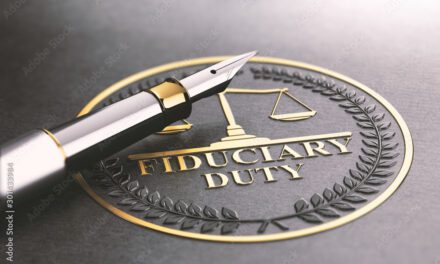Lusitania Litigation, Probate Law, and “Lapse”
Avoidance: the Dealing with the “Who Died First?” Question–
Avoidance: the Dealing with the “Who Died First?” Question–
Part VIII.B
Michael Sean Quinn (See below)
By way of summary, Charles left a lot of money to
Frances, a fair amount of money to each of his two daughters by a previous
marriage, a significant power of appointment to Frances, so to some degree
dependent on her will, i.e., decision and last will and testament. The daughters,
Gertrude Frances Brown (“Daughter Browne” or just “Browne” and Gladys Mary
Baylies (“Daughter Baylies” or just “Baylies”), plus at least some of their
children, contested his will on the grounds that it could not be determined who
died first and that Charles’attempt to stipulate that he was to be conceived,
by eveyone including courts, as having
died first, under some circumstances, was illegal and, therefore, invalid. (I imagine this was said in a sisterly
conversation: “Granted, Dad clearly
seemed to want most of his money to go to ‘What’s her name,’ but we should have
it, and we really need it. She is not really kin.
So what if she ends up broke. She knows
about art, so she’ll be able to find a job.”)
Further Background
Frances and Charles, of 1
West 64th Street, had been together for a relatively long time. Charles was a
wealthy[1] British art dealer and retailer in New York
City, although his business is often listed as an interior decoration business,
but he and his wife Frances, who may have also been British trundled back and
forth to England and Europe relatively frequently on business. (On that fateful
attempted crossing[2], their
companion was Sir Hughes Lane, a well-known British art dealer of the times.[3])
In any case, Charles[4] was the
treasurer of a commercial art gallery named Scott & Fowles, the life of
which ran from 1904, or so, until approximately 1943-46.[5] Charles and Frances appeared to have had no children.
West 64th Street, had been together for a relatively long time. Charles was a
wealthy[1] British art dealer and retailer in New York
City, although his business is often listed as an interior decoration business,
but he and his wife Frances, who may have also been British trundled back and
forth to England and Europe relatively frequently on business. (On that fateful
attempted crossing[2], their
companion was Sir Hughes Lane, a well-known British art dealer of the times.[3])
In any case, Charles[4] was the
treasurer of a commercial art gallery named Scott & Fowles, the life of
which ran from 1904, or so, until approximately 1943-46.[5] Charles and Frances appeared to have had no children.
The “Scott” was Stevenson
Scott, who, along with his wife, was
active in the New York art world for many, many years. He was identified in the New York Times as the
President of Scott and Fowles Company, a corporation for dealing in art.
Scott, who, along with his wife, was
active in the New York art world for many, many years. He was identified in the New York Times as the
President of Scott and Fowles Company, a corporation for dealing in art.
Charles’s Last Will and
Testament
Testament
Charles and Frances went to the office of the attorney
that represented both of them on April 29th or 30th, and
the wills were drafted, signed, and sworn on
either the 29th or the 30th. They apparently discussed the dangers of
sailing on the Lusitania with their lawyer.[6]
Here is what Charles’ will looked like, at least in part.
that represented both of them on April 29th or 30th, and
the wills were drafted, signed, and sworn on
either the 29th or the 30th. They apparently discussed the dangers of
sailing on the Lusitania with their lawyer.[6]
Here is what Charles’ will looked like, at least in part.
·
$5,000.00
to Frances
$5,000.00
to Frances
·
the
contents of an estate in England, the real property also being devised to her,
the
contents of an estate in England, the real property also being devised to her,
·
45%
of the residuary to Francis (sort of),
45%
of the residuary to Francis (sort of),
·
27.5%
of the residuary to to Daughter Browne
(sort of), and
27.5%
of the residuary to to Daughter Browne
(sort of), and
·
27.5%
of the residuary to Daughter Baylies (sort of).
27.5%
of the residuary to Daughter Baylies (sort of).
The 45% actually went
to a trust that the income of which would be for Frances for her lifetime.
She was to have the power to dispose of 50% of the corpus of the trust
at the point of her death.[7] This power was to be found in her Last Will
and Testament. The provision of this power was a very important
portion of the will.
was a will. That was true for centuries,
and is still true today, to some extent. Nevertheless, the phrase “will and testament”
must involve two different, though related, meaningful words, or there is
simple repetition.)
to a trust that the income of which would be for Frances for her lifetime.
She was to have the power to dispose of 50% of the corpus of the trust
at the point of her death.[7] This power was to be found in her Last Will
and Testament. The provision of this power was a very important
portion of the will.
was a will. That was true for centuries,
and is still true today, to some extent. Nevertheless, the phrase “will and testament”
must involve two different, though related, meaningful words, or there is
simple repetition.)
The other half of the trust was to go
to his daughters as income-for-life and then to their respective children. If Frances did
not exercise her power of appointment, i.e.,
picking out who would get 50% of
the corpus of the trust, it too would go in the same way to the daughters and
then their children. The
mechanism by means of which all this is
done is through executors and trustees,
but that is not important at this point.
to his daughters as income-for-life and then to their respective children. If Frances did
not exercise her power of appointment, i.e.,
picking out who would get 50% of
the corpus of the trust, it too would go in the same way to the daughters and
then their children. The
mechanism by means of which all this is
done is through executors and trustees,
but that is not important at this point.
For the
purposes of the three cases under discussion, the key part of the will is the ninth paragraph, and here it is:
purposes of the three cases under discussion, the key part of the will is the ninth paragraph, and here it is:
In the event that my said wife and
myself should die simultaneously or under such circumstances as to render it
impossible or difficult to determine who predeceased the other, I hereby
declare it to be my will that it shall be deemed that I shall have predeceased
my said wife, and that this my will and all its provisions shall be construed
on the assumption and basis that I have predeceased by said wife.
myself should die simultaneously or under such circumstances as to render it
impossible or difficult to determine who predeceased the other, I hereby
declare it to be my will that it shall be deemed that I shall have predeceased
my said wife, and that this my will and all its provisions shall be construed
on the assumption and basis that I have predeceased by said wife.
Thus Charles tried to answer the “Who died first?” question by commanding how
everyone should conceive and think about the matter of his death and then deal with
it accordingly.
everyone should conceive and think about the matter of his death and then deal with
it accordingly.
Now let’s turn to the court proceedings.
Michael Sean Quinn, Ph.D.,
J.D., c.p.c.u. . . .
J.D., c.p.c.u. . . .
The Law Firm of Michael Sean Quinn et
Quinn and Quinn
1300 West Lynn Street, Suite 208
Austin,
Texas 78703
Texas 78703
(512)
296-2594
296-2594
(512)
344-9466 – Fax
344-9466 – Fax
[1] An
appraisal of his estate was filed with the Surrogate’s Court in New York on or
about June 16, 1915. The value of the estate estimated in that filing is
reportedly #1,179,854. In 2015 dollars that sum appears to be $2.764B
appraisal of his estate was filed with the Surrogate’s Court in New York on or
about June 16, 1915. The value of the estate estimated in that filing is
reportedly #1,179,854. In 2015 dollars that sum appears to be $2.764B
[2]
Both Charles and Frances have entries in “The Lusitania Resource.”
Both Charles and Frances have entries in “The Lusitania Resource.”
[3]
Id. Sir Hugh also has an independent Wikipedia entry. He was a wealthy Irish
art dealer, museum director, and collector. He was a well know aficionado or
Impressionism and Irish itself. T here was a famous and 50 year probate
controversy regarding the “Lane Bequest” between England and Ireland.
Id. Sir Hugh also has an independent Wikipedia entry. He was a wealthy Irish
art dealer, museum director, and collector. He was a well know aficionado or
Impressionism and Irish itself. T here was a famous and 50 year probate
controversy regarding the “Lane Bequest” between England and Ireland.
[4] A 1915 portrait of Charles by Harrington Mann (1864-1937), no relation to Sally, hangs in the Taft Museum in Cincinnati, Ohio. He was a handsome devil, even at
49, and had an exemplary beard. This
painting is easily findable on the Internet.
It is not one of Mann’s best though it is certainly better than the one
of Frederick Smith, Earl of Birkenhead Lord Chancellor, a lawyer. No portraits of Frances located.
49, and had an exemplary beard. This
painting is easily findable on the Internet.
It is not one of Mann’s best though it is certainly better than the one
of Frederick Smith, Earl of Birkenhead Lord Chancellor, a lawyer. No portraits of Frances located.
[5]
There are a number of entries regarding this firm and art transaction to be
found on the Internet.
There are a number of entries regarding this firm and art transaction to be
found on the Internet.
[6]
One would be surprised if they did not discuss the ad run by the German Embassy
in the New York papers, as well as others, designed to discourage folks from making that trip. Interestingly, the ad was physically placed right under Cunard’s announcement of the schedule for the Lusitania. The
ad itself is reprinted in variety of places easily findable on the Net.
One would be surprised if they did not discuss the ad run by the German Embassy
in the New York papers, as well as others, designed to discourage folks from making that trip. Interestingly, the ad was physically placed right under Cunard’s announcement of the schedule for the Lusitania. The
ad itself is reprinted in variety of places easily findable on the Net.
[7]
Frances did this, or attempted to do this, by leaving the money to trustees,
who were required to supply her sister with the income from the trust during
her life, but when she died they were to divide the trust into one third to
Dorothy’s son Kenneth or to his issue, and one third each to Charles’ daughters
or to their issue, respectively.
Frances did this, or attempted to do this, by leaving the money to trustees,
who were required to supply her sister with the income from the trust during
her life, but when she died they were to divide the trust into one third to
Dorothy’s son Kenneth or to his issue, and one third each to Charles’ daughters
or to their issue, respectively.





Recent Comments